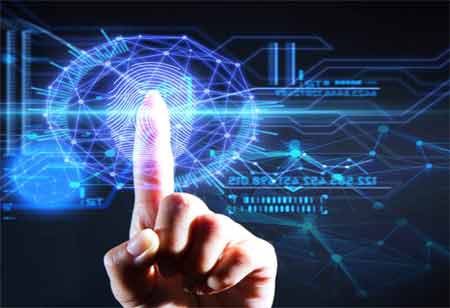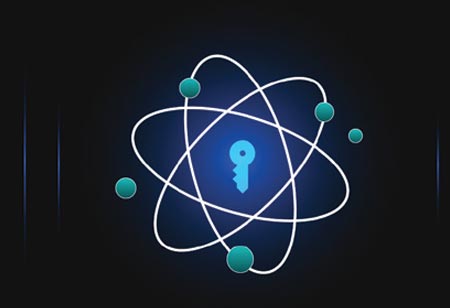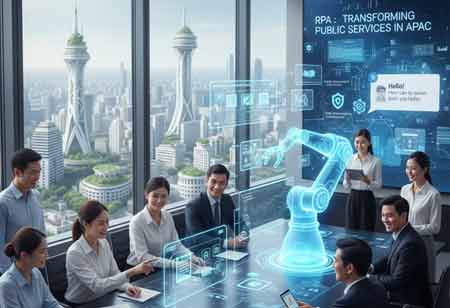THANK YOU FOR SUBSCRIBING
Exploring Emerging Cybersecurity Trends
Businesses, corporate entities, organizations, and governments have adopted computerized systems to enhance daily operations.

By
Apac CIOOutlook | Monday, May 13, 2024
Stay ahead of the industry with exclusive feature stories on the top companies, expert insights and the latest news delivered straight to your inbox. Subscribe today.
Cybersecurity requires proactive measures amidst advancing threats. Embracing AI, fortifying IoT security, prioritizing encryption, and fostering awareness is vital for safeguarding digital infrastructures.
FREMONT, CA: Businesses, corporate entities, organizations, and governments have adopted computerized systems to enhance daily operations. As a result, prioritizing cybersecurity has become crucial to safeguarding data against various online threats and unauthorized access. As technology progresses, cybersecurity trends evolve, characterized by increased data breaches, ransomware attacks, and hacking incidents. Individuals can augment their expertise by enrolling in security courses led by industry professionals. This allows them to acquire the essential knowledge and skills to ensure robust data protection.
Cybersecurity Trends
The Emergence of Automotive Cybersecurity Threats
Contemporary automobiles use cutting-edge software to provide integrated connectivity and advanced functionalities like cruise control, engine timing, and driver assistance systems. Nonetheless, this dependence on automation and connectivity exposes vehicles to potential hacking threats. By leveraging technologies such as Bluetooth and WiFi, malicious actors exploit weaknesses to assume vehicle control or intercept conversations via embedded microphones. As the use of automated vehicles continues to rise, these risks are anticipated to intensify, underscoring the need for robust cybersecurity protocols, especially for self-driving or autonomous vehicles.
Harnessing the Power of Artificial Intelligence in Cybersecurity
AI has become a fundamental element in bolstering cybersecurity measures across diverse industries. By utilizing machine learning algorithms, AI has facilitated the creation of automated security mechanisms proficient in tasks such as natural language interpretation, facial recognition, and identifying potential threats. Nevertheless, evil entities exploit this technology to orchestrate intricate attacks to bypass established security measures. Despite these obstacles, AI-powered threat detection systems can swiftly address emerging risks, offering cybersecurity experts crucial assistance.
A Growing Target for Cyber Attacks
The widespread adoption of mobile devices has rendered them attractive targets for cybercriminals, leading to a significant uptick in malware and cyberattacks aimed at mobile banking and personal information. The prevalence of smartphones in everyday tasks, such as financial transactions and communication, heightens the vulnerabilities to potential breaches. As cybersecurity threats evolve, mobile security emerges as a critical concern, with projected trends suggesting an increase in viruses and malware explicitly tailored for smartphones.
Cloud Security Challenges and Solutions
As organizations increasingly depend on cloud services, maintaining strong security becomes crucial for data storage and operations. Although cloud providers enforce rigorous security protocols, vulnerabilities emerge due to user mistakes, malicious software, or phishing attempts. Consistent monitoring and updates are imperative to minimize risks and protect sensitive data stored in the cloud.
Data Breaches
Data breaches remain a major worry for individuals and businesses globally, where even minor software weaknesses create potential vulnerabilities. Regulatory frameworks like the GDPR and CCPA seek to bolster data protection and privacy rights, highlighting the need for rigorous security protocols. Adhering to these regulations and adopting proactive security strategies are vital to minimizing the dangers of data breaches.
IoT Security in the Era of 5G
The advent of 5G networks heralds a new phase of interconnectedness, notably with the Internet of Things (IoT). While providing unparalleled connectivity, this exposes IoT devices to vulnerabilities stemming from external threats and software flaws. Given the early stage of 5G architecture, comprehensive research is imperative to pinpoint and mitigate potential security gaps. Manufacturers prioritize crafting resilient hardware and software solutions to minimize the likelihood of data breaches and network intrusions.
Embracing Automation for Enhanced Cybersecurity
Automation is critical in handling increasing data and optimizing security procedures. Amidst challenging workloads, it assists security experts, facilitating quick and effective reactions to evolving risks. Embedding security protocols into agile development frameworks guarantees the development of more robust software solutions, especially for expansive and intricate applications.
Escalating State-Sponsored Cyber Warfare
Escalating tensions among global powers are driving a rise in state-sponsored cyber warfare, with cyberattacks frequently aimed at critical infrastructure and sensitive data. Key events such as elections face heightened vulnerability to cyber threats, prompting the need for increased security measures. Forecasts anticipate a notable increase in data breaches and state-sponsored actors exploiting political and industrial secrets.
Mitigating Insider Threats Through Awareness
Individual mistakes remain a prominent factor in data breaches, particularly concerning insider threats within organizations. Enhancing awareness and implementing comprehensive training programs for employees is imperative to mitigate this risk. Empowering staff to identify and rectify potential vulnerabilities cultivates companies' robust cybersecurity awareness culture. This strategy is crucial for protecting sensitive data and efficiently mitigating the repercussions of insider threats.
Addressing Cybersecurity Challenges in Remote Work Environments
The shift to remote work amid the pandemic introduces new cybersecurity challenges as employees contend with less secure network configurations. Organizations must prioritize the adoption of robust security measures, including multi-factor authentication and secure VPNs, to adequately safeguard remote workers from cyber risks.
Combating Social Engineering Attacks
Social engineering attacks, such as phishing and identity theft, continue to pose significant threats to organizations. These attacks exploit human weaknesses to gain unauthorized access to sensitive information. Addressing the risks associated with social engineering attacks necessitates a blend of employee education and proactive security protocols.
Enhancing Security with Multi-Factor Authentication
Implementing multi-factor authentication (MFA) introduces added security measures by requiring users to supply various forms of authentication before gaining access to accounts or systems. This proactive strategy diminishes the risk of unauthorized entry and enhances the overall cybersecurity stance. Organizations must prioritize the integration of MFA to effectively bolster protection against cyber threats.
Defending Against International State-Sponsored Attacks
Sophisticated attackers backed by state entities pose a significant threat to organizations, aiming at critical infrastructure and sensitive information. Employing proactive security measures such as continuous monitoring and multi-factor authentication is crucial in safeguarding against these advanced adversaries.
Strengthening Identity and Access Management
Strong identity and access management (IAM) policies enable organizations to regulate and oversee access to critical data and networks. Incorporating rigorous authentication, authorization, and access control strategies is crucial for protecting against unauthorized entry and potential data breaches.
Real-Time Data Monitoring for Early Threat Detection
Real-time data monitoring empowers organizations to detect and address suspicious activities swiftly, mitigating the likelihood of data breaches and cyber-attacks. Automated alerts and log surveillance are pivotal in recognizing potential threats and mitigating their consequences.
The evolving landscape of cybersecurity demands vigilant adaptation to emerging trends. As technologies advance, so do the methods of cyber threats, necessitating proactive measures for defense. Embracing AI and machine learning for predictive analytics, fortifying IoT security, and prioritizing robust encryption protocols are crucial steps forward. Additionally, fostering a culture of cybersecurity awareness and investing in talent development remains pivotal. The future of cybersecurity hinges on a dynamic response to evolving threats, integration of cutting-edge technologies, and collaborative efforts across industries to safeguard digital infrastructures effectively.





